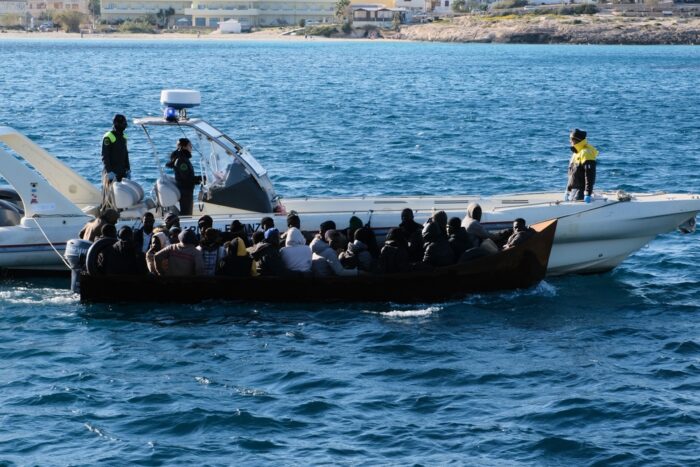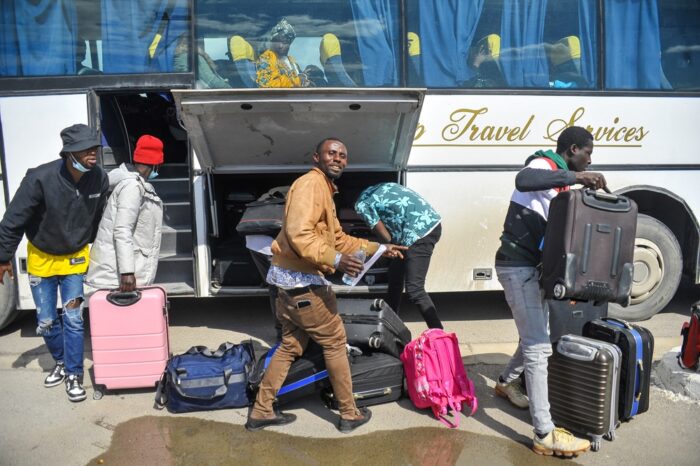Find all related Progressive Post
Progressive Post

This week, on 18 December, the world marks the 31st International Migrants Day. Migration is one of humanity’s oldest strategies to improve people’s living conditions. In today’s world, almost four out of every hundred human beings are migrants and, in one way or another, all of us are the product of the mobility decisions of our ancestors.
Migrating today implies moving between countries delimited by more or less porous borders and joining national communities more or less open to new arrivals. Host and origin societies alike, and those of transit, receive the impact of these migrations, and are confronted with the need to manage them. Better governance of migration and its effects is the aim of target 10.7 of the Sustainable Development Goals (SDGs). Migrants are seen in the 2030 Agenda as development agents. Human security, in the broadest sense, is the guiding thread of the UN Global Compact for migration. The compact places law and rights at the centre of efforts for the “legal, safe and orderly” migration mentioned in the SDGs.
The European Union had formally set the objective of managing international mobility for at least two decades as a necessary measure to accompany the dismantling of internal borders and the extension of the free movement and residence to its citizens. The compensatory measures for the Schengen acquis enshrined into the Treaty led to a unique model to protect freedom, security, and justice based on cooperation, not on barriers. The cooperation between partners as well as that of the Union with third countries – the external dimension of a shared migration and asylum policy – envisioned a viable model for the management of mobility and flows. This is the real pinnacle that protects the European Union we know. Indeed, it could contribute to a multilateral migration management as foreseen in the SDGs.
However, the policies and norms that should support this model are not a reality yet. It is undeniable that there have been advances during these years in immigration policies, but always based on minimum agreements that have resulted in separate pieces of a puzzle that is far from being completed. In the field of asylum, there is a more complete and more coherent regulatory framework, the Common European Asylum System, but with very uneven implementation and enforcement.
There has been, and there are, objective reasons for many disagreements. Member states have different starting points and different standpoints. Within the Union coexist territories with borders more or less exposed to international flows, states with more or less robust and guarantee-based asylum systems, labour markets more or less flexible and tolerant of the informal economy, or weaker and more robust social protection systems. Migration intersects with these and other issues – related to pull-factors and accommodation. Migration raises questions about our societies that are not always easy to address. Activities in the countries of origin, to tackle the so-called root causes of pushing factors for migration, generates more consensus and is an essential part of the external dimension of the EU migration policy. This has been shown by allocating ten per cent of the financial instrument ‘Global Europe’ to migration. However, this greater consensus does not always generate a greater capacity for effective action.
Along with the objective difficulties to advance towards a common migratory and asylum policy as defined by the Treaties, we have increasingly faced more diffuse but really harmful political difficulties in these years. The use of migration in nativist-nationalist narratives within the national political arenas has strongly impacted the European political agenda. On the one hand, it has prevented reaching any consensus for the many successive European Commission proposals – the last one, the New Pact on Migration and Asylum, is on hold for more than a year now. On the other hand, the migration issue continues to be portrayed as an external threat, one that interacts with other fears. The problem is diverted to the borders with all its symbolic significances. It does not matter if 25,000 people have arrived from Tunisia to Italy since the beginning of the Arab Spring, more than a million from a Middle East harmed by the war in Syria, or a few thousands to the border with Belarus, not to mention the African flow towards Spain: irrespectively of numbers, migration always appears to be out of control and is approached in an emergency mode. With this framing, the economic and social dimension of migration gets concealed. The focus on external physical borders obscures growing social boundaries, inequalities, and breaches of rights, and all of them undermine trust in our social and rights model.
Nativist-nationalists combine anti-immigrant speech with an anti-European Union narrative (think about Brexit). The future of the Union depends on returning to the path of rationality and addressing the key components of any migration policy. While this is not achieved, while the European Migration Pact cannot be adopted, the Union’s migration strategy focuses on what can generate the largest consensus: the contention of migration at the external borders. These policies, however, ignore – or even deny – that most questions linked to migration can only be answered if the Union focusses on our own societies, our labour markets, and our foreign policy – more than on our borders. The divisive narrative makes us more fragile at home and weakens us internationally.
Discussing and making progress on the migration proposals is the only possibility. The free movement within the European Union and the cooperation to assure this area of freedom, security, and justice – and rights – is under serious threat. The future of the Pact of Migration and Asylum is related to the future of the EU itself.
Photo credits: Ajdin Kamber/Shutterstock
| Cookie | Duration | Description |
|---|---|---|
| cookielawinfo-checkbox-advertisement | 1 year | Set by the GDPR Cookie Consent plugin, this cookie is used to record the user consent for the cookies in the "Advertisement" category . |
| cookielawinfo-checkbox-analytics | 11 months | This cookie is set by GDPR Cookie Consent plugin. The cookie is used to store the user consent for the cookies in the category "Analytics". |
| cookielawinfo-checkbox-functional | 11 months | The cookie is set by GDPR cookie consent to record the user consent for the cookies in the category "Functional". |
| cookielawinfo-checkbox-necessary | 11 months | This cookie is set by GDPR Cookie Consent plugin. The cookies is used to store the user consent for the cookies in the category "Necessary". |
| cookielawinfo-checkbox-others | 11 months | This cookie is set by GDPR Cookie Consent plugin. The cookie is used to store the user consent for the cookies in the category "Other. |
| cookielawinfo-checkbox-performance | 11 months | This cookie is set by GDPR Cookie Consent plugin. The cookie is used to store the user consent for the cookies in the category "Performance". |
| csrftoken | past | This cookie is associated with Django web development platform for python. Used to help protect the website against Cross-Site Request Forgery attacks |
| JSESSIONID | session | The JSESSIONID cookie is used by New Relic to store a session identifier so that New Relic can monitor session counts for an application. |
| viewed_cookie_policy | 11 months | The cookie is set by the GDPR Cookie Consent plugin and is used to store whether or not user has consented to the use of cookies. It does not store any personal data. |
| Cookie | Duration | Description |
|---|---|---|
| __cf_bm | 30 minutes | This cookie, set by Cloudflare, is used to support Cloudflare Bot Management. |
| S | 1 hour | Used by Yahoo to provide ads, content or analytics. |
| sp_landing | 1 day | The sp_landing is set by Spotify to implement audio content from Spotify on the website and also registers information on user interaction related to the audio content. |
| sp_t | 1 year | The sp_t cookie is set by Spotify to implement audio content from Spotify on the website and also registers information on user interaction related to the audio content. |
| Cookie | Duration | Description |
|---|---|---|
| CONSENT | 2 years | YouTube sets this cookie via embedded youtube-videos and registers anonymous statistical data. |
| iutk | session | This cookie is used by Issuu analytic system to gather information regarding visitor activity on Issuu products. |
| s_vi | 2 years | An Adobe Analytics cookie that uses a unique visitor ID time/date stamp to identify a unique vistor to the website. |
| Cookie | Duration | Description |
|---|---|---|
| NID | 6 months | NID cookie, set by Google, is used for advertising purposes; to limit the number of times the user sees an ad, to mute unwanted ads, and to measure the effectiveness of ads. |
| VISITOR_INFO1_LIVE | 5 months 27 days | A cookie set by YouTube to measure bandwidth that determines whether the user gets the new or old player interface. |
| YSC | session | YSC cookie is set by Youtube and is used to track the views of embedded videos on Youtube pages. |
| yt-remote-connected-devices | never | YouTube sets this cookie to store the video preferences of the user using embedded YouTube video. |
| yt-remote-device-id | never | YouTube sets this cookie to store the video preferences of the user using embedded YouTube video. |
| yt.innertube::nextId | never | This cookie, set by YouTube, registers a unique ID to store data on what videos from YouTube the user has seen. |
| yt.innertube::requests | never | This cookie, set by YouTube, registers a unique ID to store data on what videos from YouTube the user has seen. |
| Cookie | Duration | Description |
|---|---|---|
| COMPASS | 1 hour | No description |
| ed3e2e5e5460c5b72cba896c22a5ff98 | session | No description available. |
| loglevel | never | No description available. |


